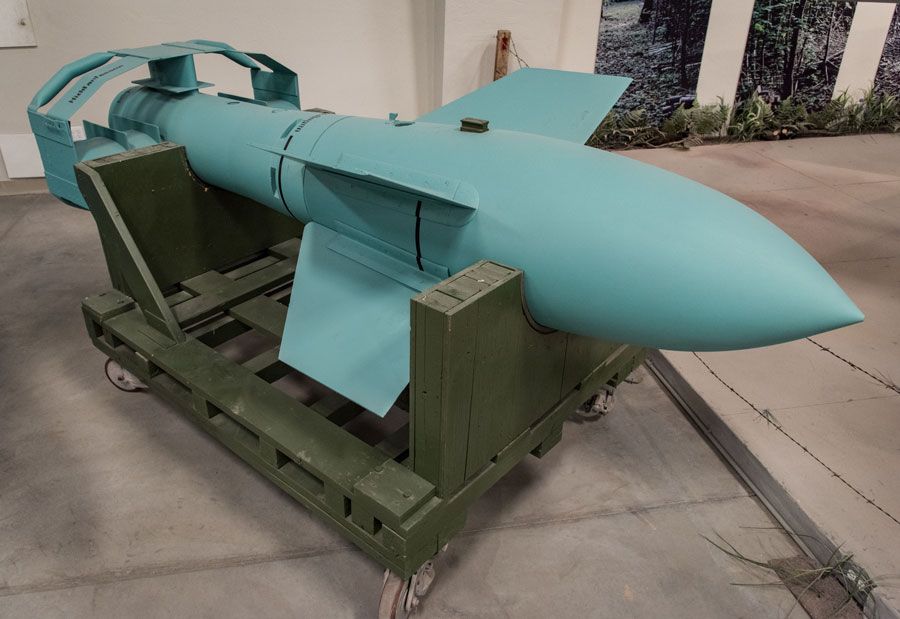Rhurstahl Fritz X
Ruhrstahl SD 1400 X “Fritz X” Guided Bomb
Germany led the world in the development of guided weapons before and during World War II. The experiments that led to the Fritz X began in the late 1930s and were focused on developing a weapon for attacking moving ships. In essence, it is a standard armor piercing bomb fitted with radio-controlled tail fins and small wings to increase its glide range. Once dropped, the bombardier would visually guide the weapon using a radio set to direct the bomb to its target.
The Fritz X was first used in combat in 1943 during the Allied landings in Sicily. The bomb’s greatest success was the sinking of the Italian battleship Roma in September 1943 after Italy’s surrender to the Allies. In addition, several Allied warships were damaged by Fritz X bombs during the invasion of Italy. The allies then developed radio jamming technology that greatly reduced the effectiveness of the Fritz X and other radio-controlled German weapons.
This bomb was captured by the American military at the end of the war and returned to the United States for study. It was eventually turned over to the Smithsonian Institution’s National Air and Space Museum. It was placed on loan to the Pima Air & Space Museum in 2008.
| Wingspan | 5 ft |
Width |
| Length | 11 ft |
Length |
| Height | 2 ft 8 in. |
Diameter |
| Weight | 3,000 lbs |
Weight |
| Max. Speed | 705 pounds of Amatol explosive |
Warhead |
| Service Ceiling | Kehl-Strassburg FuG 203/230 radio control |
Guidance |
| Range | 3 miles |
Range |
Manufacturer
Rhurstahl
Markings
None
Designation
SD 1400 X “Fritz X”
Serial Number
Unknown

